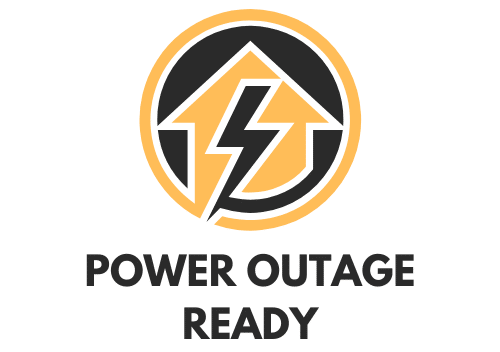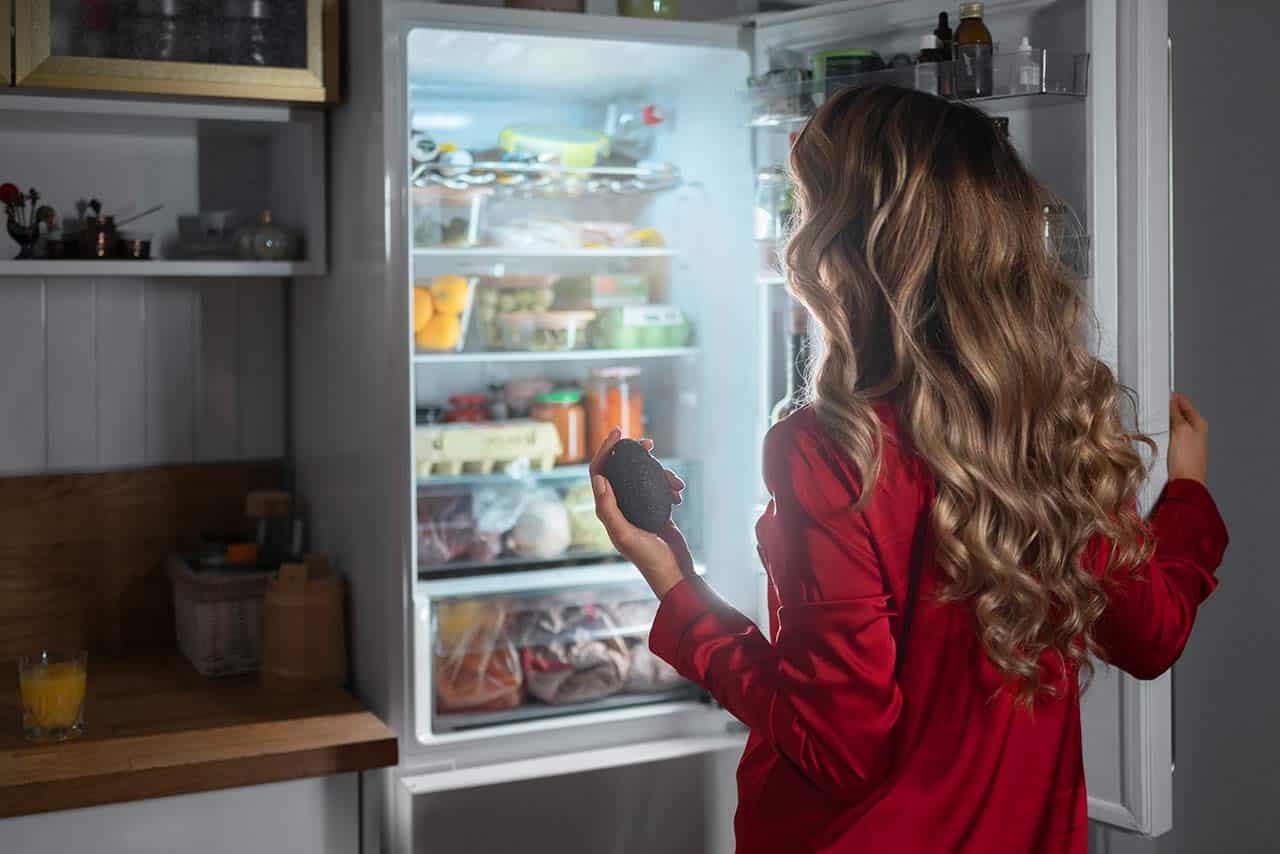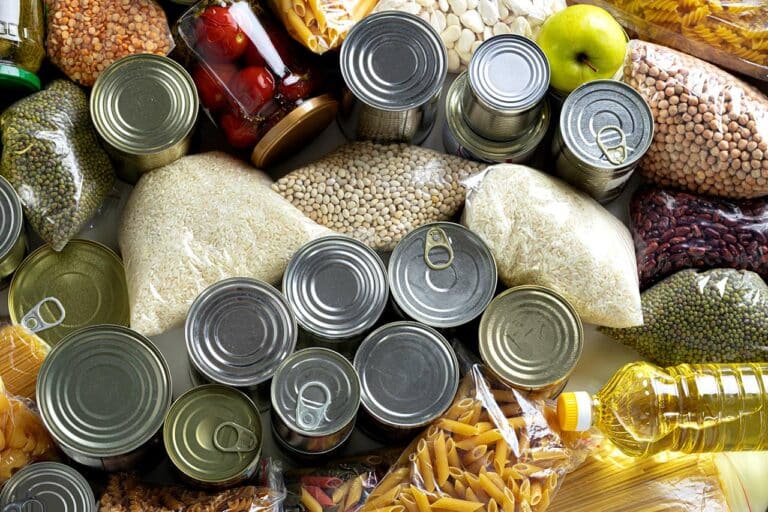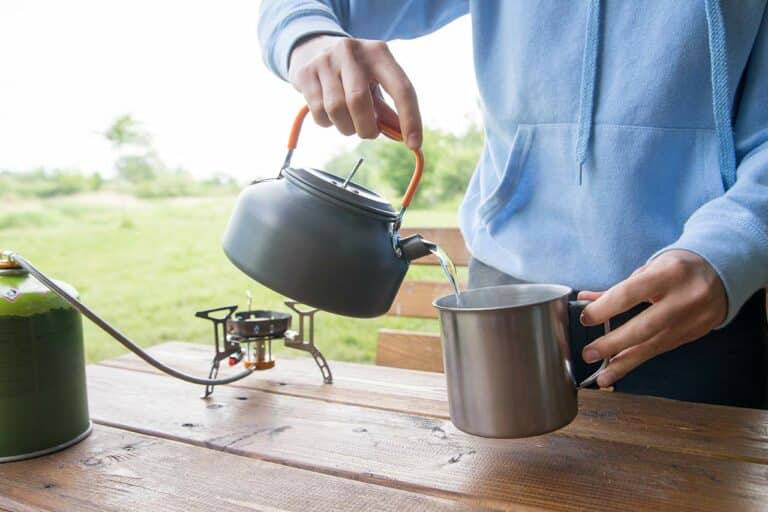How Long Will Food Stay Good In A Power Outage? (Safety Details)
Power outages can catch you off guard, and one major concern during these events is how long your food will remain safe to eat. The length of time your food stays good in a power outage depends on several factors, such as the type of food, the temperature, and how long the power stays off. Being in the know will help you make the right choices when it comes to keeping your grub safe.
Understanding The Basics Of Food Storage During Power Outages
Role of Refrigerator and Freezer
During a power outage, your refrigerator and freezer play a crucial role in keeping your food safe. The refrigerator should be maintained at or below 40°F, while the freezer should be at 0°F or below. When the power goes out, your fridge will keep food safe for up to 4 hours, and a full freezer can hold its temperature for 48 to 72 hours, depending on its size, the ambient temperature outside it, and how much frozen food is inside. To prolong the freshness of your food, keep the doors of these appliances closed as much as possible.
Effect of Temperature On Foods
Temperature is a key factor in preserving the quality and safety of your food during a power outage. When the temperature inside your fridge or freezer goes above 40°F, bacteria and other germs that cause foodborne illnesses can start to multiply. To avoid this, it’s essential to monitor the temperature and take necessary measures, like placing your food in a cooler with ice packs if the temperature can’t be maintained at 40°F or below in the refrigerator.
Importance of Appliance Thermometer
Having appliance thermometers inside your refrigerator and freezer is an effective way to monitor and maintain the right temperatures during power outages. These thermometers can help you determine if your food is still at safe levels, which can be crucial in emergency situations. Of course, to monitor food safety with an appliance thermometer, you will have to open the door, letting out precious cold air.
Don’t check your thermometer within the first two hours after an outage. This is about the time food can sit safely at room temperature anyway. Then, check the monitor at the longest intervals possible. You should have some idea of how often you should check the refrigerator’s temperature after checking it the first time, because you should be able to determine roughly how fast it’s warming up.
Identifying Perishable Foods
Common Perishable Foods
When a power outage comes for your food supply, some foods are more vulnerable than others. These are the foods you’ll want to watch the most closely, or even eat first when an outage hits.
- Fruits and vegetables: While whole fruits and veggies can last longer, cut fruits and leafy greens spoil in no time.
- Meat, poultry, and seafood: These items can spoil rapidly. The good news is, they are typically one of the easiest things to chuck into the freezer as soon as an outage hits, prolonging their life.
- Dairy products: Milk, yogurt, and soft cheeses can go bad quickly, especially if they aren’t kept cold.
Remember, these are only a few examples—many other foods in your fridge will spoil when exposed to certain temperatures and conditions. But processed foods will fare better than fresh.
Storage of Different Types of Foods
When a power outage strikes, you’ll want to keep your perishable foods as safe as possible. As an outage drags on, here’s how you can store your perishables to try to prolong their freshness:
- Fruits and vegetables: Keep whole fruits and vegetables in a cool, dry place, away from sunlight. If you have cut fruit, store it in a sealed container, and use a cooler with ice or gel packs when the fridge temperature exceeds 40°F.
- Meat, poultry, and seafood: Keep these items in the freezer or refrigerator. During a power outage, a full freezer should keep food safe for about 48 hours. If the power is out for more than 4 hours, transfer these items to the freezer or to a cooler with ice.
- Dairy products: Ensure they are stored at or below 40°F in the refrigerator. If the fridge temperature rises above 40°F for more than 2 hours, it’s time to toss them. Otherwise, move them to a cooler with ice.
Impact of Power Outages On Dairy Products
Longevity of Dairy Products
When there’s a power outage, the safety of your dairy products largely depends on the temperature inside your fridge and how long the power stays out. If the power is out for a short period, less than 4 hours, and you keep the fridge door closed, many dairy products may still be good to consume. But, of all your perishables, dairy products are the most volatile. Here’s some guidance on what to do with dairy products after an outage.
- Milk and cream: They can last up to 4 hours if the fridge remains closed. Any longer makes them risky to consume. But they may not taste the same. You may want to toss any milk and cream that sat at below 40°F for any period of time.
- Hard cheeses (e.g., cheddar, Swiss): They can stay good for longer durations compared to soft cheeses due to their lower moisture content. If the fridge falls below 40°F, hard cheeses still have a couple of hours before they start to truly spoil, but it’s best to chuck them into a cooler with ice, or pack ice packs around them in the fridge, as soon as the temperature dibs below 40.
- Soft cheeses (e.g., brie, feta): They last around 4 hours, similar to milk and cream. Discard them if your fridge’s temp goes above 40°F (4°C) for more than 2 hours. And, again like milk and cream, they may lose quality before they are unsafe to eat.
- Yogurt and sour cream: Like milk and soft cheeses, they can last up to 4 hours during a power outage. Their high acidity can slow bacterial growth, making them slightly safer.
Maintaining Refrigerator and Freezer Temperatures
Role of Ice in Maintaining Temperature
In a power outage, it’s crucial to keep your refrigerator and freezer at safe temperatures as long as possible. Ice can come in handy in these situations.
By freezing water in containers, like empty water bottles, and storing them in your freezer, you create additional cold sources, which can help maintain the temperature when the power goes out.
You can even transfer these “ice packs” to your refrigerator around your most perishable foods, creating a sort of makeshift cooler.
Utilizing Alternative Cooling Methods
While your refrigerator and freezer are your first lines of defense when it comes to food safety during power outages, if you want to be truly prepared for an outage, you may want to keep a few supplies on hand. These can help keep things cool when your food supply starts to warm up.
Coolers
Coolers come in handy when the power is out for an extended period of time. They provide insulation and are smaller capacity than a refrigerator, which makes it easier to keep them cold.
Along with your coolers, you’ll need a good stock of ice packs or frozen gel packs (plastic water bottles with frozen water inside work well) to help maintain the temperature inside the cooler.
You’ll also want a thermometer to monitor the temperature.
Block Ice
Block ice has a slower melting rate compared to ice cubes and can be used to keep your food cold inside a cooler or refrigerator longer. It usually lasts up to 24 hours, depending on the insulation of your cooler or refrigerator.
Any type of large container with frozen water works well as block ice.
Identifying Ice Crystals
So, you know how to determine whether to throw away food from your refrigerator after a power outage, but what about your freezer? Well, there’s an easy way to determine if frozen foods are still safe to eat, and it’s actually a lot easier than determining whether your refrigerated foods are safe to eat.
Foods with ice crystals still present on them are generally safe to eat. The presence of ice crystals is an indication that the food has remained partially or fully frozen during the outage, which means it stayed at a safe temperature.
If there are no ice crystals, you can use a food thermometer to see if the food is still below 40°F, or you can take the safer, more prudent route and just throw away any frozen food that no longer has ice crystals to avoid potential health risks.
Staying Prepared and Ensuring Food Safety
The key to ensuring food safety during a power outage is preparation and knowledge. Understand your foods, their storage requirements, and how to identify when they’ve compromised their quality or safety.
Regularly checking on the food, particularly dairy and meats, can provide you with timely indicators of their condition.
When in doubt, it’s better to be safe and discard questionable items. With preparedness and vigilance, you can navigate power outages with minimal disruption and maximum safety. Stay informed, stay safe, and stay well-fed.







